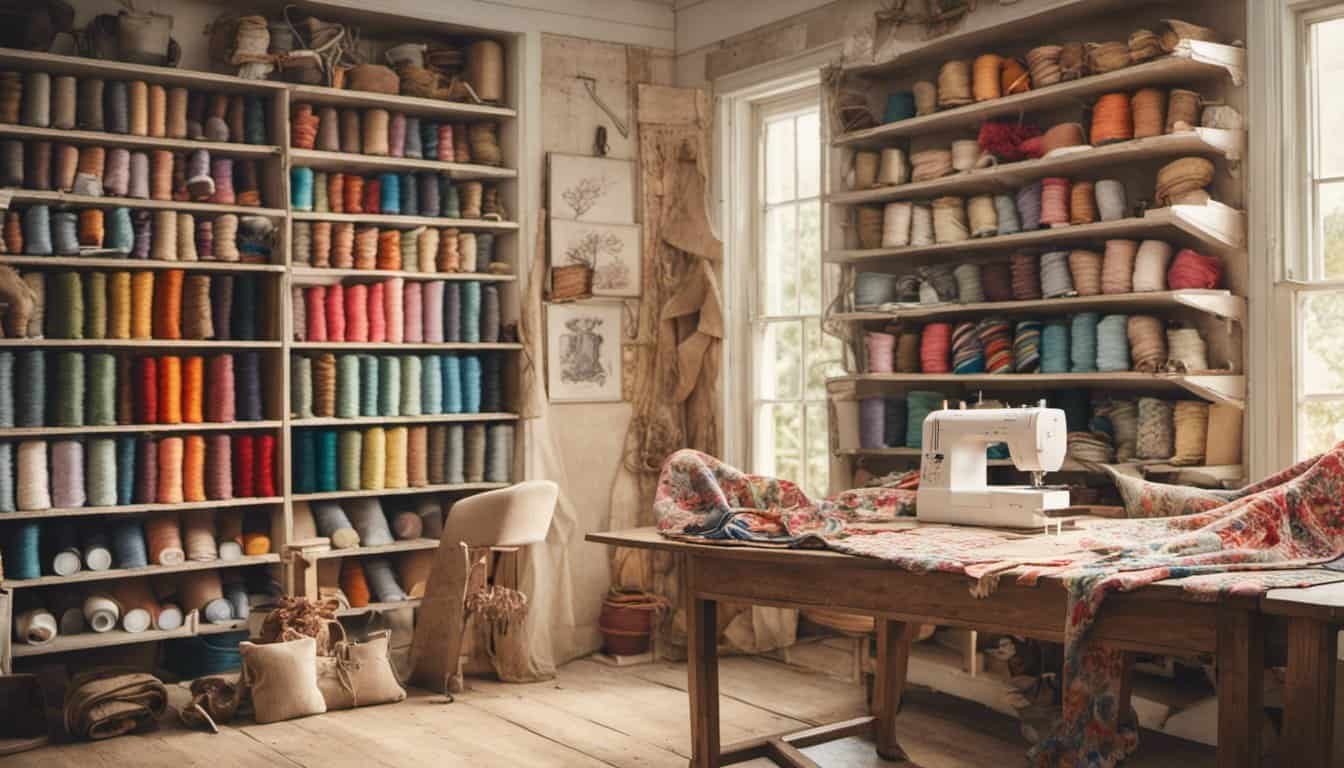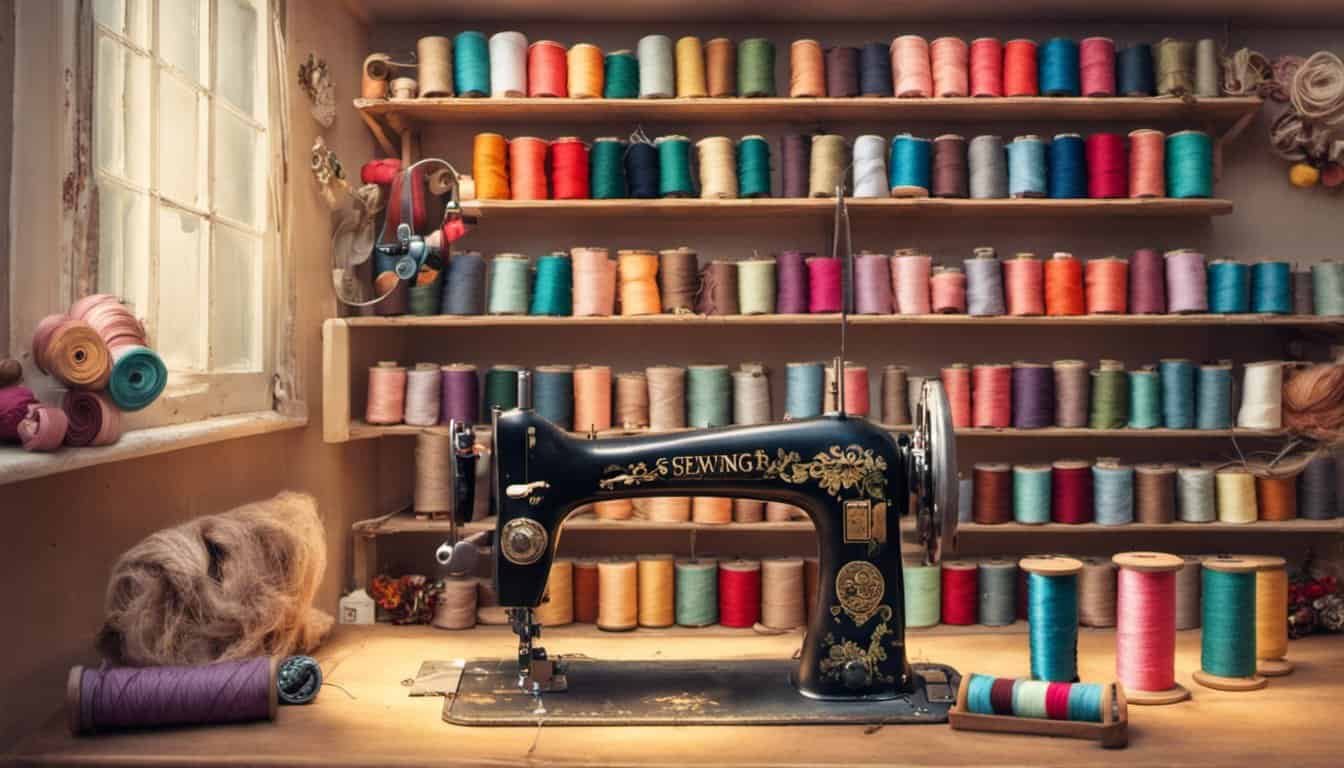Are you passionate about sewing and eager to dive into the rich history of the craft? Vintage sewing manuals are treasure troves of timeless techniques and classic patterns waiting to be discovered. Whether you’re a seasoned seamstress or just starting out, finding these old-school guides can enhance your skills and inspire your projects.
Imagine flipping through pages filled with detailed instructions and charming illustrations that have stood the test of time. Locating these manuals might seem daunting, but with the right tips and resources, you can uncover valuable gems that add a unique touch to your sewing journey. Let’s explore how you can start building your collection today.
Understanding Vintage Sewing Manuals
Vintage sewing manuals serve as comprehensive guides from past decades, offering techniques and patterns that have stood the test of time. These manuals often include detailed illustrations, step-by-step instructions, and a variety of projects ranging from basic garments to intricate accessories.
Key Features of Vintage Sewing Manuals
- Comprehensive Instructions
Manuals provide thorough explanations of sewing techniques, ensuring you understand each step. If a technique is unclear, refer to the accompanying illustrations for clarification.
- Classic Patterns
Included patterns reflect the fashion trends of their time, such as 1950s dresses or 1960s blouses. These patterns can inspire modern adaptations or be used as-is for authentic vintage garments.
- Quality Illustrations
Detailed drawings and diagrams help visualize the sewing process. High-quality illustrations can make complex techniques more accessible.
- Material Recommendations
Manuals suggest appropriate fabrics and materials for each project. Understanding these recommendations ensures your finished product maintains the desired quality and appearance.
Benefits of Using Vintage Sewing Manuals
- Timeless Techniques
Learn methods that remain relevant, enhancing your sewing skills. Techniques like French seams or bias binding are still widely used today.
- Inspiration for Projects
Access a diverse range of projects that can spark creativity. From simple skirts to elaborate quilts, these manuals offer something for every skill level.
- Historical Insight
Gain knowledge about the evolution of fashion and sewing practices. Understanding historical contexts can enrich your appreciation of vintage styles.
Common Types of Vintage Sewing Manuals
- Instructional Guides
Focus on teaching specific sewing techniques, such as embroidery or quilting. These guides are ideal for honing particular skills.
- Pattern Books
Contain multiple patterns for various garments and accessories. Ideal for those looking to expand their project repertoire.
- Fashion Catalogs
Showcase fashionable designs of their era, often reflecting the latest trends. These catalogs can be a source of inspiration for contemporary creations.
Identifying Authentic Vintage Manuals
- Publication Date
Check the publication date to ensure the manual is from the desired era. Older manuals often have distinct design elements typical of their time.

- Binding and Paper Quality
Original bindings and paper types can indicate authenticity. Vintage manuals usually feature higher-quality materials compared to modern reprints.
- Publisher Information
Recognize reputable publishers known for producing sewing guides. Familiarize yourself with names like Singer or McCall’s to aid in identification.
Understanding vintage sewing manuals enhances your sewing journey by providing reliable resources and inspiring timeless creativity.
Where to Find Vintage Sewing Manuals
Discovering vintage sewing manuals is easier when you know where to look. Explore various sources to build your collection effectively.
Online Marketplaces
Online marketplaces offer a vast selection of vintage sewing manuals. eBay features numerous listings from sellers worldwide, allowing you to compare prices and conditions. Etsy specializes in handmade and vintage items, providing unique manuals and collector’s editions. Amazon also lists vintage guides, often with detailed descriptions and customer reviews to help you choose. Additionally, websites like AbeBooks and Alibris focus on rare and out-of-print books, making them excellent resources for finding specific titles.
Specialty Bookstores
« Top 10 Best Sewing Webinars to Watch in 2025 – Elevate Your Skills Now
How to Sew Stretch Fabrics Like a Pro: 7 Insider Tips You Need Now »
Specialty bookstores cater to enthusiasts seeking specialized collections. Local independent bookstores often carry rare and vintage sewing manuals, especially those with sections dedicated to crafts and hobbies. Online specialty retailers like Lion Brand Yarn and BurdaStyle offer curated selections of vintage sewing guides. Book fairs and conventions focused on sewing and crafts provide opportunities to find unique manuals and connect with other collectors. These stores typically have knowledgeable staff who can assist you in locating specific manuals or recommending valuable additions to your collection.
Thrift Shops and Antique Stores
Thrift shops and antique stores are treasure troves for vintage sewing manuals. Goodwill and The Salvation Army frequently stock unexpected finds, including old sewing guides at affordable prices. Local antique shops often have curated collections of vintage books, where you can browse for specific manuals or discover hidden gems. Estate sales and garage sales are another excellent option, offering the chance to negotiate prices and find manuals in various conditions. Regular visits to these locations increase your chances of finding unique and rare sewing manuals to enhance your collection.
Evaluating Quality and Authenticity
When searching for vintage sewing manuals, assessing their quality and authenticity ensures you invest in valuable resources. Follow these steps to evaluate each manual effectively:
1. Check Publication Dates
Verify the manual’s publication date to confirm its vintage status. Examine the copyright page or publication information typically found at the beginning or end of the manual. Compare the date with known publishing years of reputable brands.
2. Assess Binding and Paper Quality
Inspect the manual’s binding and paper to determine its condition and authenticity:

- Binding: Original bindings are usually sturdy, with sewn or glued spines. Look for signs of wear such as loose pages or torn covers.
- Paper: Vintage manuals use thicker, high-quality paper. Check for yellowing, brittleness, or creases that indicate age.
3. Recognize Reputable Publishers
Identify manuals from well-known publishers in the sewing industry. Trusted publishers often include:
- Viking Press
- McCall’s
- Simplicity
Research the publisher’s history to ensure the manual’s legitimacy.
4. Examine Illustrations and Instructions
Evaluate the clarity and style of illustrations and instructions:
- Illustrations: Authentic vintage manuals feature hand-drawn or early printed illustrations. High-resolution, detailed images reflect quality.
- Instructions: Clear, step-by-step instructions with consistent formatting indicate a genuine manual. Look for historical sewing techniques that align with the manual’s publication date.
5. Look for Edition and Printing Details
Determine the manual’s edition and printing information:
- Edition: Limited or first editions are more valuable. Check for edition numbers or reprint notices.
- Printing Details: Original printings have specific markings or stamps. Compare with known authentic examples.
6. Inspect for Wear and Tear
Evaluate the manual’s condition:

- Binding: Minimal damage to the spine and covers suggests careful preservation.
- Pages: Look for intact pages without excessive markings, stains, or tears.
- Overall Condition: Manuals in good condition retain their usability and aesthetic appeal.
7. Compare with Known Authentic Examples
Use reference guides or online databases to compare your manual with verified authentic copies. Pay attention to:
- Design Elements: Consistent layout, typography, and cover design.
- Serial Numbers or Barcodes: These should match official records for the specific edition and publisher.
By systematically evaluating these factors, you can confidently identify high-quality, authentic vintage sewing manuals to enhance your collection and sewing projects.
Tips for Preserving Vintage Manuals
Maintaining the condition of your vintage sewing manuals ensures they remain valuable resources and cherished collectibles. Follow these guidelines to preserve your manuals effectively:
Store in a Controlled Environment
- Temperature and Humidity: Keep manuals in a room with stable temperatures between 65-70°F and humidity levels around 45-50%. Fluctuations can damage paper and bindings.
- Avoid Sunlight: Store manuals away from direct sunlight to prevent fading and paper deterioration.
- Proper Ventilation: Ensure storage areas are well-ventilated to minimize mold growth and moisture buildup.
Handle with Care
- Clean Hands: Always handle manuals with clean, dry hands to prevent oils and dirt from transferring to the pages.
- Support When Open: Use both hands to support the manual when flipping pages to avoid stressing the spine.
- Minimal Folding: Avoid excessive folding or bending of pages to maintain their integrity.
Use Protective Covers
- Acid-Free Sleeves: Place manuals in acid-free plastic sleeves or archival-quality boxes to protect against dust, pollutants, and physical damage.
- Binder Options: Consider using binders with archival sleeves for easy access and additional protection.
Display Wisely
- Protective Glass: If displaying manuals, use UV-protective glass to shield them from harmful light.
- Horizontal Storage: Store displayed manuals horizontally to reduce stress on bindings and prevent warping.
- Regular Monitoring: Check displayed manuals regularly for signs of deterioration and adjust conditions as needed.
Clean and Maintain
- Dust Regularly: Gently dust manuals with a soft brush or microfiber cloth to remove surface debris.
- Avoid Chemicals: Do not use cleaning solvents or sprays, as they can damage paper and bindings.
- Repair Minor Damage: Address small tears or loose pages promptly using acid-free tapes or adhesives designed for paper conservation.
Digitize Your Collection
- Create Digital Copies: Scan manuals to create digital backups, reducing the need to handle originals and preserving content.
- Organize Files: Store digital copies in organized folders with clear labels and metadata for easy access.
- Secure Storage: Use external hard drives or cloud storage services to protect digital versions from loss or damage.
Regular Inspection
- Check for Pests: Inspect storage areas for signs of pests like insects or rodents that can damage paper and bindings.
- Assess Condition: Periodically review manuals for any changes in condition, such as discoloration, brittleness, or mold growth.
- Address Issues Promptly: Take immediate action if you notice any signs of damage to prevent further deterioration.
By implementing these preservation techniques, you can ensure your vintage sewing manuals remain in excellent condition, providing lasting value and inspiration for your sewing projects.
Conclusion
Discovering vintage sewing manuals gives you access to timeless techniques and endless inspiration for your projects. As you explore different sources and learn to identify authentic guides your collection will grow into something special. Take care of your manuals to keep them looking great and useful for years. Embrace the journey of finding these classic gems and let them inspire your sewing adventures. Happy sewing!


















